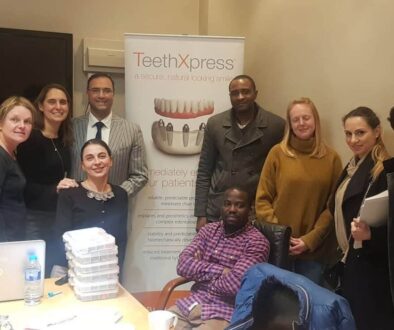Dental implants have transformed modern dentistry by offering patients a reliable and long-term solution for missing or damaged teeth. Unlike traditional dentures or bridges, implants restore both function and aesthetics, allowing patients to enjoy a natural-looking smile and improved oral health. But what are the 3 types of dental implants, and which one is right for you?
In this comprehensive guide, we’ll explore the main types of dental implants, their advantages, when each type is recommended, and what patients can expect during treatment. Whether you’re replacing a single missing tooth, multiple teeth, or require full mouth restoration, understanding your options will help you make an informed decision about your dental care.
Introduction to Dental Implants
A dental implant is an artificial tooth root, usually made of titanium, that is surgically placed into the jawbone. Once integrated, it provides a stable foundation for prosthetic teeth such as crowns, bridges, or dentures. This procedure not only replaces missing teeth but also preserves bone structure, prevents adjacent teeth from shifting, and restores oral health.
Most patients prefer dental implants because they look, feel, and function like natural teeth. Unlike removable dentures, implants are fixed in place, ensuring a secure and comfortable fit.
Why Dental Implants Are the Gold Standard for Tooth Replacement
When it comes to tooth replacement, dental implants are widely regarded as the best option. Here’s why:
- Natural look and feel – They mimic natural tooth structure.
- Durability – With proper care, implants can last decades.
- Bone preservation – They stimulate bone growth, preventing bone loss.
- Improved function – Patients can eat, speak, and smile confidently.
- Oral health benefits – Unlike dental bridges, implants don’t damage adjacent teeth.
This makes implants the preferred solution for restoring one or more missing teeth, especially when long-term results matter.
The 3 Main Types of Dental Implants
So, what are the 3 types of dental implants most commonly used in modern dentistry? Let’s break them down:
1. Endosteal Implants
- The most common type
- Placed directly into the jawbone
- Requires healthy bone density
- Supports single crowns, bridges, or dentures
2. Subperiosteal Implants
- Placed under the gum but above the jawbone
- Ideal for patients with limited bone density
- Less invasive than bone grafting procedures
- Provides support for multiple prosthetic teeth
3. Zygomatic Implants
- The least common and most complex type
- Anchored in the cheekbone (zygoma) instead of the jawbone
- Recommended for patients with severe bone loss in the upper jaw
- Avoids the need for extensive bone grafting
Comparing the 3 Types of Dental Implants
| Type | Placement | Ideal For | Complexity |
| Endosteal | In the jawbone | Most patients with enough bone | Low |
| Subperiosteal | On top of jawbone, under gum | Patients with limited bone density | Moderate |
| Zygomatic | Anchored in cheekbone | Severe bone loss in upper jaw | High |
Each option has unique benefits depending on the patient’s oral health, bone density, and treatment goals.
Factors That Influence the Choice of Dental Implant
Bone Density and Bone Growth
Patients with strong bone density are usually good candidates for endosteal implants. However, if bone density is limited, subperiosteal or zygomatic implants may be necessary.
Oral Health and Existing Teeth
Healthy gums and adjacent teeth play a vital role in implant success. Dentists will perform a thorough examination before recommending the best treatment plan.
Number of Missing Teeth
For a single missing tooth, one implant and a crown may be enough. For multiple missing teeth, implant-supported bridges or dentures may be suggested.
Implant-Supported Restorations
Single Tooth Implants
Perfect for replacing one missing tooth without affecting adjacent teeth.
Multiple Dental Implants
Used when several teeth are missing in different areas of the mouth.
Full Mouth Dental Implants
Also known as “All-on-4” or “All-on-6,” this method restores an entire arch using only a few implants.
Advanced Implant Options
Immediate Load Dental Implants
Also called “same-day implants,” they allow patients to receive temporary teeth right after implant placement.
Mini Dental Implants
Mini dental implants are smaller in diameter and are often used for patients with limited bone structure or to stabilise dentures.
Implant-Supported Dentures and Bridges
Offer improved stability compared to traditional dentures, making them a popular choice for multiple missing teeth.
Step-by-Step Dental Implant Treatment Process
- Consultation and examination – Includes X-rays and CT scans.
- Treatment plan creation – personalised to the patient’s needs.
- Implant placement surgery – Performed under local anaesthesia or sedation.
- Healing and osseointegration – Bone fuses with the implant over several months.
- Abutment placement – Connector between implant and crown.
- Final restoration – Prosthetic teeth are attached, completing the process.
Benefits of Dental Implants Over Traditional Dentures
- Prevent bone loss and preserve facial structure
- Offer permanent stability and comfort
- Improve chewing ability and speech
- Require less maintenance compared to removable dentures
- Provide a more natural and confident smile
Possible Risks and Complications of Dental Implants
While highly successful, implants may occasionally involve:
- Infection at the implant site
- Nerve damage
- Sinus problems (especially with upper jaw implants)
- Implant failure due to poor bone healing
Most of these risks can be minimised with proper planning and experienced dental care.
FAQs About Dental Implants
1. What are the 3 types of dental implants?
The three main types are endosteal, subperiosteal, and zygomatic implants.
2. How long do dental implants last?
With proper oral hygiene and regular checkups, implants can last 20 years or more.
3. Can anyone get dental implants?
Most patients qualify, but those with uncontrolled medical conditions or insufficient bone may need additional treatments first.
4. Are dental implants painful?
The procedure is performed under anaesthesia, so discomfort is minimal. Some soreness may occur during recovery.
5. What’s the difference between implants and dentures?
Implants are permanent, fixed solutions, while dentures are removable and may slip or feel less secure.6. How much do dental implants cost?
Costs vary depending on the number of implants, type, and complexity. A consultation provides a tailored estimate.
Conclusion
Dental implants offer a reliable, long-lasting solution for replacing missing or damaged teeth. From endosteal implants to advanced options like zygomatic implants, there’s a treatment for almost every patient, whether you’re missing a single tooth or need full mouth restoration.
At Chrysanth Dental, we provide personalised treatment plans designed to restore your smile and improve your oral health. If you’re considering dental implants, book a consultation today and take the first step toward a confident, healthy smile.




